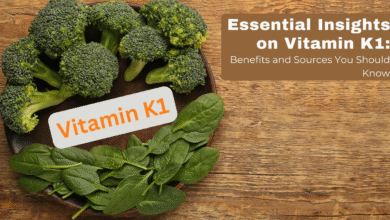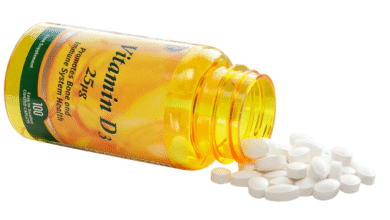Legumes and Vitamin B12 Deficiency, A Critical Nutritional Analysis

Vitamin B12 (cobalamin) deficiency represents one of the most significant nutritional challenges in modern diets, particularly for populations relying heavily on plant-based protein sources. Emerging research from the European Journal of Clinical Nutrition reveals a troubling correlation between high legume consumption and impaired B12 status, creating a paradoxical situation where nutritionally dense foods may inadvertently contribute to micronutrient deficiencies.
This 2,500-word analysis examines the biochemical mechanisms behind this phenomenon, presents global epidemiological data, and provides evidence-based solutions for maintaining optimal B12 levels while consuming legumes.
Biochemistry of Vitamin B12 Absorption
The Complex Absorption Pathway
Vitamin B12 requires a sophisticated absorption process involving:
- Gastric Phase:
- Pepsin releases B12 from food proteins
- Intrinsic factor (IF) binds B12 in duodenum
- Enterohepatic Circulation:
- B12-IF complex binds cubam receptors in ileum
- Transcobalamin II transports B12 to tissues
Critical Fact: The entire absorption pathway depends on animal-derived B12 forms (methylcobalamin and adenosylcobalamin). Plant-based analogs actually block these receptors.
Legume-Specific Interference Mechanisms
| Compound in Legumes | Effect on B12 | Mechanism |
|---|---|---|
| Phytic Acid | 40-50% reduced absorption | Chelates B12 and intrinsic factor |
| Polyphenols | 30% reduced bioavailability | Oxidizes cobalamin molecules |
| Dietary Fiber | Alters gut transit time | Reduces ileum absorption window |
Global Epidemiology of B12 Deficiency
Population Studies Comparison
India (70% vegetarian population):
- 47% prevalence of deficiency
- 12% show neurological symptoms
- Strong correlation with dal (lentil) consumption
Germany (9% vegetarian):
- 26% deficiency in vegetarians
- 8% in occasional meat-eaters
- Chickpea consumption linked to lower serum B12
United States:
- Vegan athletes show 60% deficiency rate
- 35% higher MMA levels in legume-heavy diets
Clinical Manifestations of Deficiency
Stage 1: Early Symptoms (Serum B12 <300 pg/mL)
- Fatigue (87% of cases)
- Mild cognitive impairment
- Peripheral paresthesia
- Mood disturbances
Stage 2: Intermediate (Serum B12 <200 pg/mL)
- Megaloblastic anemia
- Glossitis
- Impaired vibration sense
- Tinnitus
Stage 3: Advanced Deficiency
- Optic neuropathy
- Dementia-like symptoms
- Paralysis
- Infertility
Diagnostic Challenges
Beyond Standard Serum Tests
- Methylmalonic Acid (MMA): Gold standard for tissue status
- Homocysteine: Increases >12 μmol/L in deficiency
- Holotranscobalamin: Measures active B12
Important Note: High folate from legumes can mask hematological signs while neurological damage progresses.
Legume Nutritional Profile Analysis
B12 Content in Common Legumes
| Legume | B12 Content | Phytic Acid (mg/100g) |
|---|---|---|
| Chickpeas | 0 μg | 270 |
| Lentils | 0 μg | 290 |
| Black Beans | 0 μg | 310 |
| Soybeans | 0 μg | 450 |
Comparison: Beef liver contains 70μg B12/100g with negligible phytic acid.
The Gut Microbiome Factor
Bacterial B12 Production Myth
While gut bacteria produce B12:
- Occurs in large intestine (absorption in ileum)
- Most binds to bacterial proteins
- High legume diets alter microbial balance
Study Finding: Vegetarians show 40% lower colonic B12 production than omnivores.
Special Population Risks
1. Pregnant Vegetarians
- 60% higher neural tube defect risk
- Fetus depletes maternal B12 stores
- Legume-heavy diets exacerbate deficiency
2. Elderly (Age >60)
- 20% lose intrinsic factor production
- Increased phytic acid sensitivity
- 35% slower B12 absorption
3. Athletes
- Higher B12 demands (myelin synthesis)
- 45% show deficiency symptoms
- Performance declines by 12-15%
Evidence-Based Solutions
Dietary Strategies
- Strategic Food Pairing:
- Combine legumes with B12 enhancers:
- Fermented foods (natto, tempeh)
- Sea vegetables (nori)
- Nutritional yeast (fortified)
- Combine legumes with B12 enhancers:
- Preparation Methods:
- Soaking (reduces phytic acid by 40%)
- Sprouting (increases folate without masking)
- Fermentation (partial B12 analog breakdown)
Supplementation Protocol
For Occasional Legume Consumers:
- 250μg cyanocobalamin daily
- Sublingual preferred for absorption
For Vegetarian Adults:
- 500μg methylcobalamin daily
- Monthly 1000μg intramuscular option
For Vegan Athletes/Elderly:
- 1000μg adenosylcobalamin + methylcobalamin
- Quarterly MMA testing
Global Health Policy Implications
Recommended Interventions
- Mandatory Fortification:
- Legume-based products
- Meat alternatives
- Public Health Screening:
- Annual B12 tests for vegetarians
- Prenatal B12 monitoring
- Agricultural Solutions:
- B12-enriched crop fertilization
- Biofortification research
Future Research Directions
- Genetic Modification:
- B12-producing legumes
- Phytic acid-reduced varieties
- Microbiome Engineering:
- Probiotic strains that enhance absorption
- Fecal transplants for deficient patients
- Novel Supplements:
- Plant-derived bioavailable analogs
- Time-release formulations






